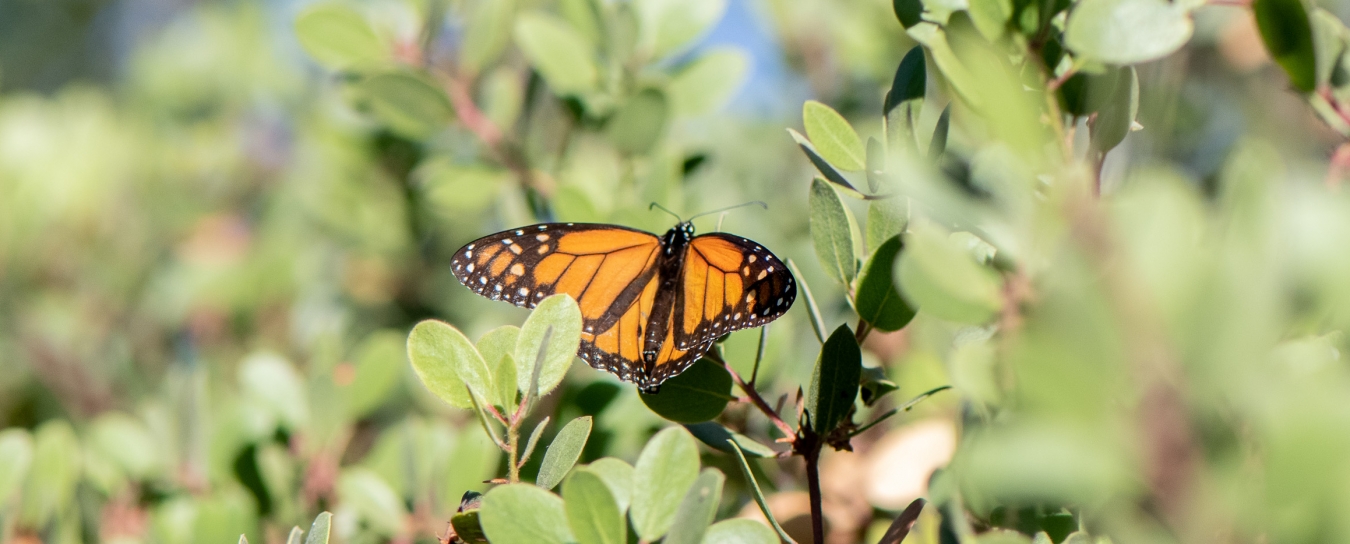
Invertebrates
See our handy guide to critters found in local homes and our Central Coast Butterfly FAQ. Browse the insects and other terrestrial arthropods we’ve identified. Check out local marine invertebrates, particularly bivalve mollusks and intertidal organisms.
- Anthropology
- Rocks & Fossils
- Invertebrates
- Vertebrates
- Botany
- Astronomy
- Fungi
- General
- Recently Asked
Insect identification
Hi!
My daughter saw an interesting beetle at school (in Temecula, California), and she asked me if I knew what type of beetle it was. She took a photo of it with her phone (please see the attached image). It has an interesting red "outline" on its back. I'm not an expert with beetles, at all haha...so, I did some Google image searching, and general searching, and I wasn't able to locate a match. I saw your name listed on the Santa Barbara Museum of Natural History website and thought I'd reach out for help. Any idea what this type of beetle might be?
All the best!
Scott

Curator Response
Hi Scott,
This colorful little critter is actually a nymph of a true bug (insect order Hemiptera), not a beetle. Beetles and true bugs are often confused with one another, but there is an easy way to tell the difference almost 100% of the time: beetles have a long, straight line down the center of the back, while bugs do not. This line in beetles is the division between the elytra, sometimes called "wing covers," but actually the modified first pair of wings. Bugs, on the other hand, have a very large triangular portion (the scutellum) in the middle of the back, and their wings, when present, overlap behind this scutellum and don’t make a long straight line. I can tell this is an immature (nymphal) true bug because of the exposed abdomen and presence of “wing buds,” which, once this critter molts into the adult stage, will grow into fully developed wings.
This particular true bug appears to be a species of Scutelleridae, or shield bug. These are close relatives of the true stink bugs, or Pentatomidae, which tend to be much more common. As nymphs, they can be distinguished by looking just behind that scutellum in the middle of the back. The abdominal segments of Scutelleridae look “pinched,” plus the first pair of scent glands, just barely visible in your photo as little bumps in the bluish metallic region in the middle of the abdomen, are more widely separated than the second and third pairs. In an adult of Scutelleridae, that tough scutellum will actually become a large turtle shell-like plate that covers most of the back, making them easy to distinguish from other true bugs and giving them their common name of "shield bugs." This is when they really look similar to beetles! Again, look for that straight line—all adult beetles will have it, while Scutelleridae and other true bugs won't; immature beetles look like grubs, not like smaller versions of adults as do true bugs.
I’m stumped as to what species this might be. There are many different shield bugs in California and unfortunately there aren’t any great resources for their identification, especially as nymphs and especially for when certain microscopic features aren’t visible.
Stay curious,
Schlinger Chair and Curator of Entomology Matthew L. Gimmel, Ph.D.


